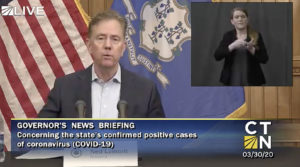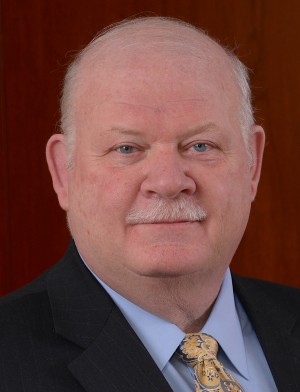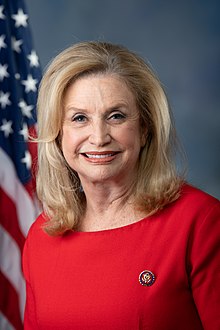While Connecticut’s number of COVID-19 infections, hospitalizations and deaths continues to rise, Gov. Ned Lamont today insisted that they “seem to be flattening out,” and said he is in talks with fellow governors about how to “slowly and methodically” return people to work in a safe way.
 Fairfield County has recorded another 31 deaths since yesterday, bringing its total to 132. The county now has 4,136 confirmed cases.
Fairfield County has recorded another 31 deaths since yesterday, bringing its total to 132. The county now has 4,136 confirmed cases.
Overall the state has conducted 29,036 tests, with 7,781 positive results, 1,308 hospitalizations, and 277 deaths.
Lamont said that the number of new hospitalizations has been averaging around 90 a day for the past five days, as compared with an average of 102 the week before that. Unwilling to proclaim that a trend, the governor said, “It seems to be flattening out.”
Those numbers “give our hospitals more capacity, more time to plan, more ventilators and ICU rooms,” he added.
Lamont also said he is working with New York Gov. Andrew Cuomo and New Jersey Gov. Phil Murphy to map out a strategy for how to bring workers back on line in a concerted manner.
The governor further said he would release details later today about a “safe workplace order.” Noting that most manufacturers are already observing most of its provisos, Lamont said it would center in part on self-monitoring, self-testing and an onsite fever test each shift, with anyone having a temperature of 100.4 degrees or above sent home.
He noted that Stanley Black & Decker in New Britain, which has about 30,000 employees around the country, has been following that protocol and has recorded just five infections so far.
Meanwhile, an updated model devised by the Institute for Health Metrics and Evaluation (IHME) at the University of Washington projects that Connecticut”™s hospitals will hit peak resource use on April 21, at which time there will be a shortage of 7,488 hospital beds and a deficit of 1,751 ICU beds ”“ much direr predictions than IHME had made a week ago.
While the earlier model forecast that the state would record 1,092 deaths through Aug. 4, the new one predicts 5,474 deaths by that date.
Meanwhile, the state has an adequate supply of PPE (personal protective equipment), the state’s COO, Josh Geballe said, with about 1,400 ventilators now available across Connecticut. Lamont said the state will also soon join Massachusetts, Rhode Island and Georgia as sites where CVS will offer drive-through testing sites.
AROUND THE COUNTY
This morning, Yale New Haven Health System (YNHHS) CEO Marna Borgstrom said that the rate of increase in COVID-19 positive patients at its facilities ”“ which include Greenwich and Bridgeport Hospitals ”“ had decreased since it began tracking the data last month, from 15% to 16% each day a few weeks ago to 10% to 12% last week and “more around 7%” today.

Greenwich Hospital President and CEO Norman Roth said it had discharged 117 patients ”“ 67 in the last week ”“ to their homes or “step-down” facilities, where they can receive intermediate care and rehabilitation, the first time official discharge data has been released. Yesterday, Lamont indicated that the state could start including information about discharged COVID-19 patients as early as tomorrow.
Also today came word that Ridgefield First Selectman Rudy Marconi had tested positive for COVID-19, the first municipal leader in the state to do so. “Because I have been extremely careful in following all the directives, this is a reminder of how aggressive this virus is. Please stay home,” Marconi said in a statement.
Meanwhile, Bridgeport Mayor Joe Ganim has ordered all essential businesses ”“ including bodegas and variety stores that are typically open until the early morning hours ”“ to close by 8 p.m., effective April 7.
As for the Small Business Administration loan program that began last Friday, its Connecticut district office reported that nearly 1,300 loans totaling about $640 million had been approved through the new Paycheck Protection Program.
D.C. DEVELOPMENTS
President Donald Trump today removed the acting inspector general for the Defense Department, Glenn Fine, from chairing the Pandemic Response Accountability Committee (PRAC), which was formed to oversee how the $2 trillion in emergency coronavirus funding was distributed.
Fine ”“ tasked with preventing “waste, fraud, and abuse” in the use of the relief money ”“ will revert to his position as the Principal Deputy Inspector General.

U.S. Sen. Chris Murphy said Trump “has effectively surrendered to COVID-19 by providing absolutely no meaningful federal leadership to stop the virus, and now he’s trying to make sure no one finds out the details of his fatal negligence ”¦(He) is making clear his priority is avoiding responsibility and accountability, and keeping open a pathway to use the relief funds to reward friends and punish enemies.
“I”™m working on legislation that would establish seven-year terms for inspectors general and only allow removal of them for cause,” Murphy added. “If recent events have shown us anything, it”™s that we desperately need independent watchdogs to safeguard our system of government from political abuse.”
The chairwoman of the House Oversight Committee, U.S. Rep. Carolyn Maloney (D-New York), called Fine’s removal “a direct insult to the American taxpayers ”“ of all political stripes ”“ who want to make sure their tax dollars are not squandered on wasteful boondoggles, incompetence, or political favors.”
“Trump’s actions are a blatant attempt to degrade the independence of Inspectors General who serve as checks against waste, fraud, and abuse,” she added.
In the meantime, House Speaker Nancy Pelosi (D-California) last week announced a special committee to oversee the government”™s response to the pandemic, while House Intelligence Committee Chairman Adam Schiff (D-California) has been circulating a draft of legislation to establish a bipartisan commission, with subpoena power, to investigate the response to the coronavirus pandemic by the Trump administration and other levels of government.
In addition, The New York Times reported today that U.S. Director of Trade and Manufacturing Policy Peter Navarro wrote a memo dated Jan. 29 warning the administration that the unfolding crisis, then still limited to overseas, could cost the U.S. trillions of dollars and millions of American lives.
“The lack of immune protection or an existing cure or vaccine would leave Americans defenseless in the case of a full-blown coronavirus outbreak on U.S. soil,” the memo said. “This lack of protection elevates the risk of the coronavirus evolving into a full-blown pandemic, imperiling the lives of millions of Americans.”
As of this writing, there are about 384,000 positive cases and more than 12,000 virus-related deaths in the U.S. ”“ roughly a 15.6% increase since this time yesterday ”“ and over 1.4 million positive cases and nearly 81,000 deaths globally.




















